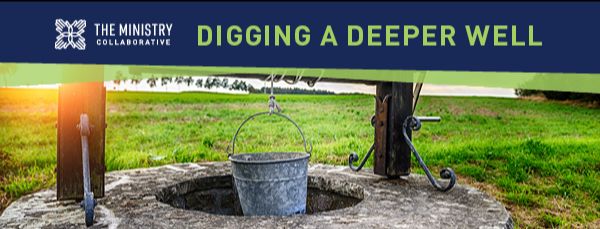“OK, I get it. Out with our three-minute devotion,” wrote one colleague last week in response to our previous two posts. “But what now? If I go to our board with a poem or a longer Bible study, that’s a sudden change. I don’t think they will buy it. We’ve got enough disagreements on the board without adding this one.”
We hear you. This post is not about Bible studies, or poems, or short stories, or many of the other tools that can help you and your board dig a deeper well. In their place this week, we offer chairs.
Amanda Ripley wrote a recent opinion piece for The Washington Post that can help us think about how to change board culture. Descriptively titled “These radically simple changes helped lawmakers actually get things done,” it charts the remarkable progress made by one bipartisan committee “on modernization” to change its own culture and begin to break government gridlock.
Ripley’s reporting contains insights that are immediately translatable to your church board.
In Congress, there is virtually no drop-in workspace where members from different parties can have a casual conversation without a camera. In the hearing rooms, members sit separately, with Democrats on one side and Republicans on the other. Outside the hearing rooms, the antechambers and cloakrooms are also segregated by party. There are almost no opportunities for members and staff to see each other as complicated humans with families, doubts, questions, and regrets. This is dysfunction by design. As Winston Churchill put it: “We shape our buildings and afterwards our buildings shape us.”
In the especially fraught aftermath of January 6, 2021, the two chairpersons (one from each party) decided “to confront the fracture directly,” as Ripley notes. “Because the only way out of difficult conflict is through.”
When people with intractable conflict sit down and listen to each other under the right conditions, they make surprising discoveries.… Even as they continued to bitterly disagree about many things, the simple experience of being heard was cathartic. ‘It felt like someone turned the air conditioning on.… You saw people starting to be curious about each other again.’
Surprise and curiosity are almost always a good thing to encounter in a committee room. But then there were the chairs.
As Congress returned to in-person hearings, committee members did something truly startling: They stopped sitting up on high, on a dais, like every other committee and started sitting in a round table format, at the same level of the people who came to testify. Turns out that fixing politics starts by rearranging the furniture.
If it is too much of a change to start using thirty minutes of every board meeting for faith formation, how about experimenting with the setting and seating arrangements? If the room feels too big, find some place more intimate. If the room feels too small, find some place more spacious. Seat people closer together. Get rid of tables (which, with laptops, can become like a fortress, preventing us from seeing one another). Have the council chairs sit somewhere different each time.
Probably the congressional committee didn’t think of Jesus as their team-building consultant. But they could have. Jesus didn’t just address crowds; he spoke discretely to twelve people and asked them to follow him. He often appeared in homes and ate with those seeking to hear from him. When he sent the disciples out, they did not go as one big group, but two by two. And, in Luke 9 (the account of feeding the 5,000, plus women and children), after Jesus locates the five loaves and two fish, he instructs the disciples:
“Have them sit down in groups of about fifty each.”
They did so and had them all sit down.
Rearranging the crowd was crucial to the moment.
Frederick Buechner may not have been thinking about church boards or chairs when he wrote the following passage in Now and Then. Yet he offers an eloquent vision for what a church board can and should become:
Unless you become like a child, Jesus said, you will never enter the Kingdom of Heaven, and maybe part of what that means is that in the long run what is good about religion is playing the way a child plays at being grown up until he finds that being grown up is just another way of playing and thereby starts to grow up himself. Maybe what is good about religion is playing that the Kingdom will come, until—in the joy of your playing, the hope and rhythm and comradeship and poignance and mystery of it—you start to see that the playing is itself the first-fruits of the Kingdom’s coming and of God’s presence within us and among us.
Hope.
Rhythm.
Comradeship.
Poignance.
Mystery.
Just once, wouldn’t it be great if churches were asked to evaluate their ministry and mission by those categories? But, right, let’s start small. How might moving your chairs move your board closer to “the hope and rhythm and comradeship and poignance and mystery” at the heart of God’s Kingdom?
What details in the story of the congressional committee strike home for you and your board?
How can you help church board members and staff “to see each other as complicated humans with families, doubts, questions, and regrets?” (Why are doubts and regrets an especially important part of what we need to see in each other?)
How is your current building—or meeting room—‘shaping’ your board? How about your seating arrangements?
Which of Buechner’s five qualities (hope, rhythm, comradeship, poignance, mystery) feels most important to work on in your next board meeting? What small change will you make to start that work?








No Comments